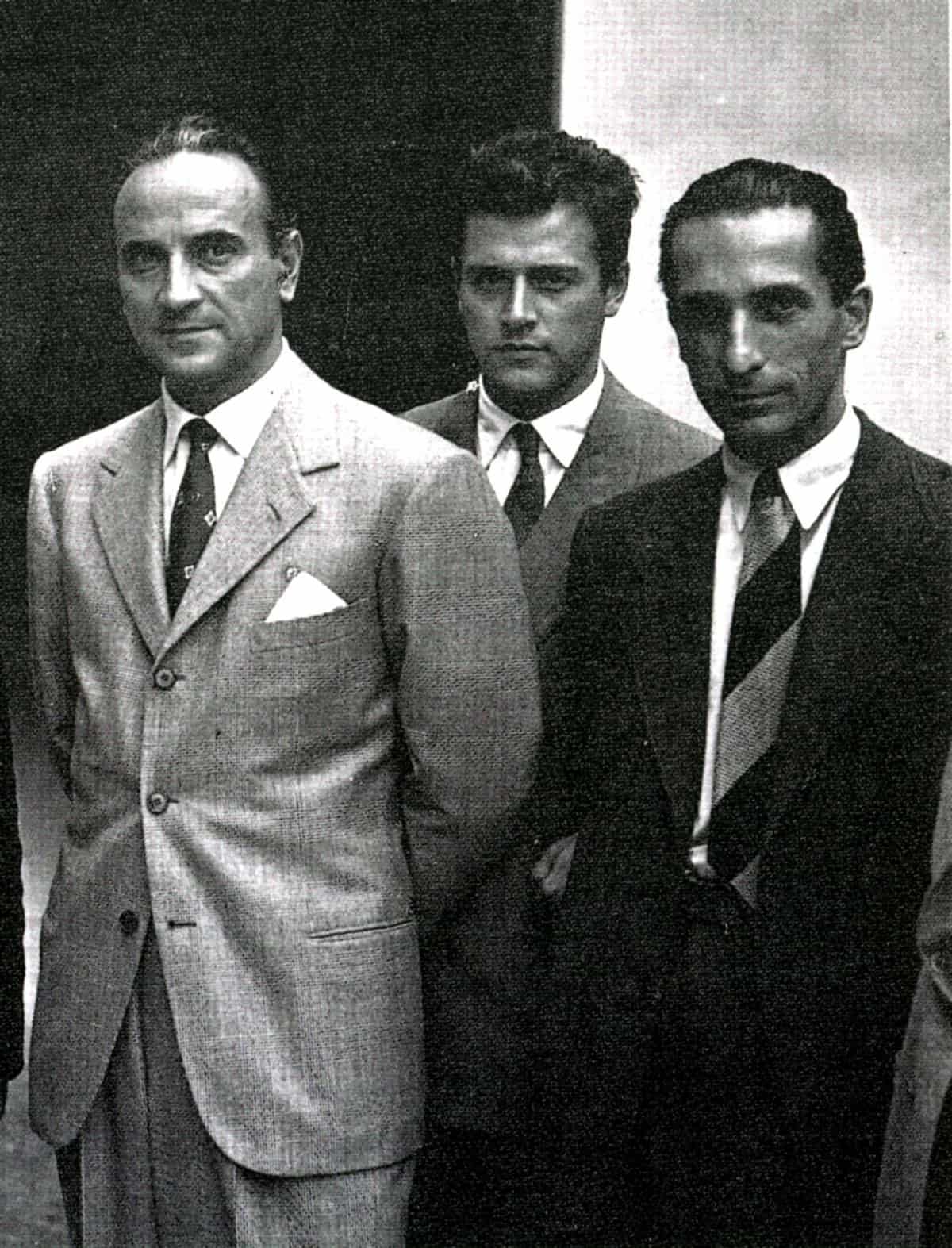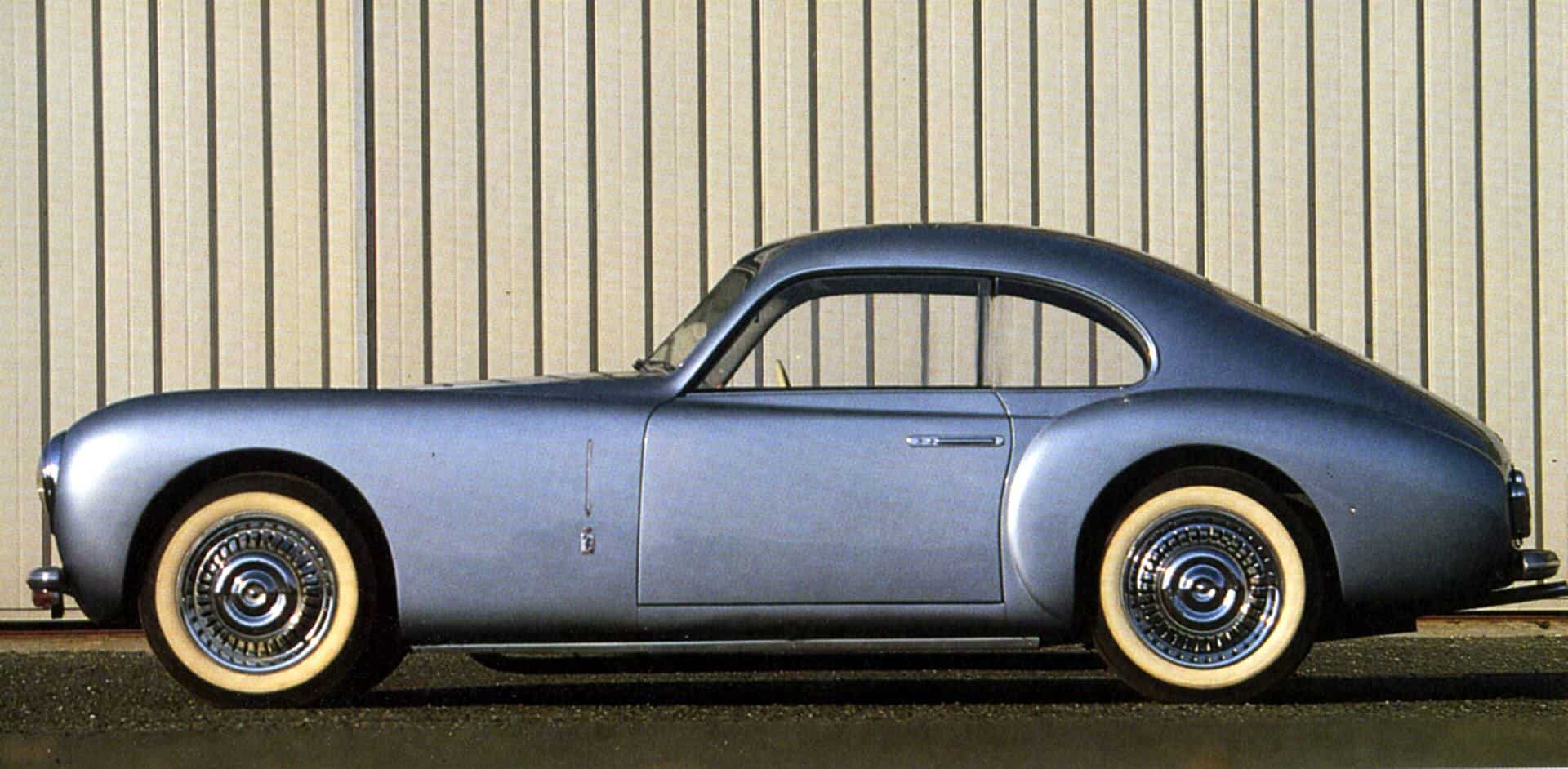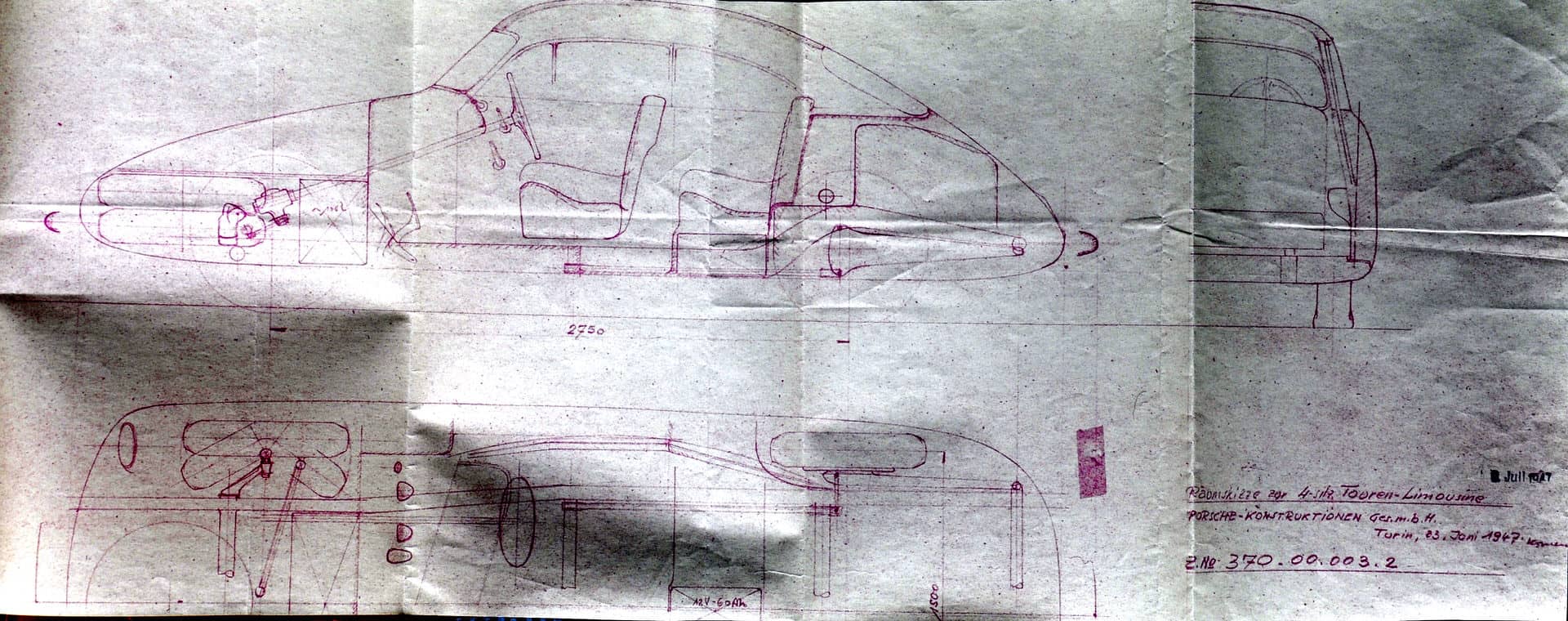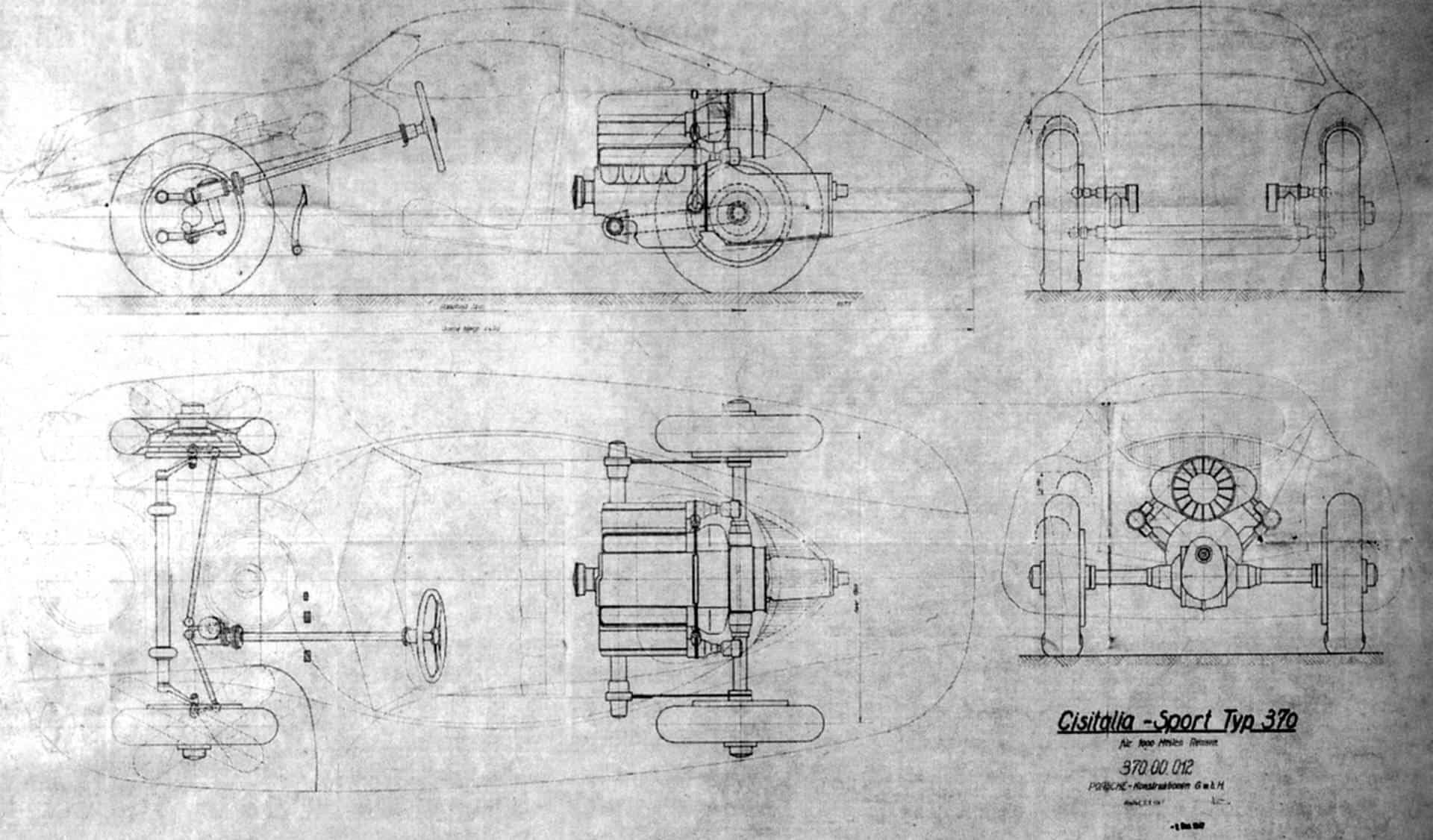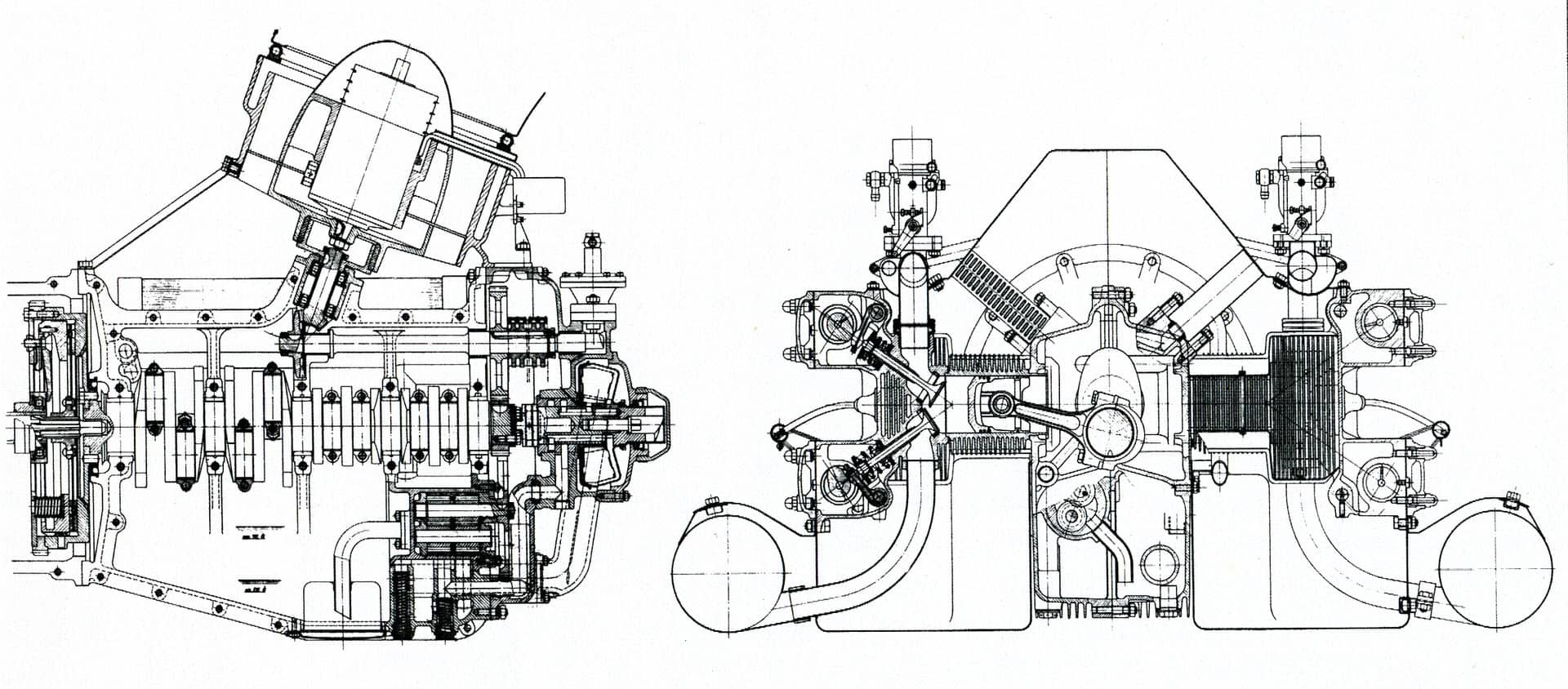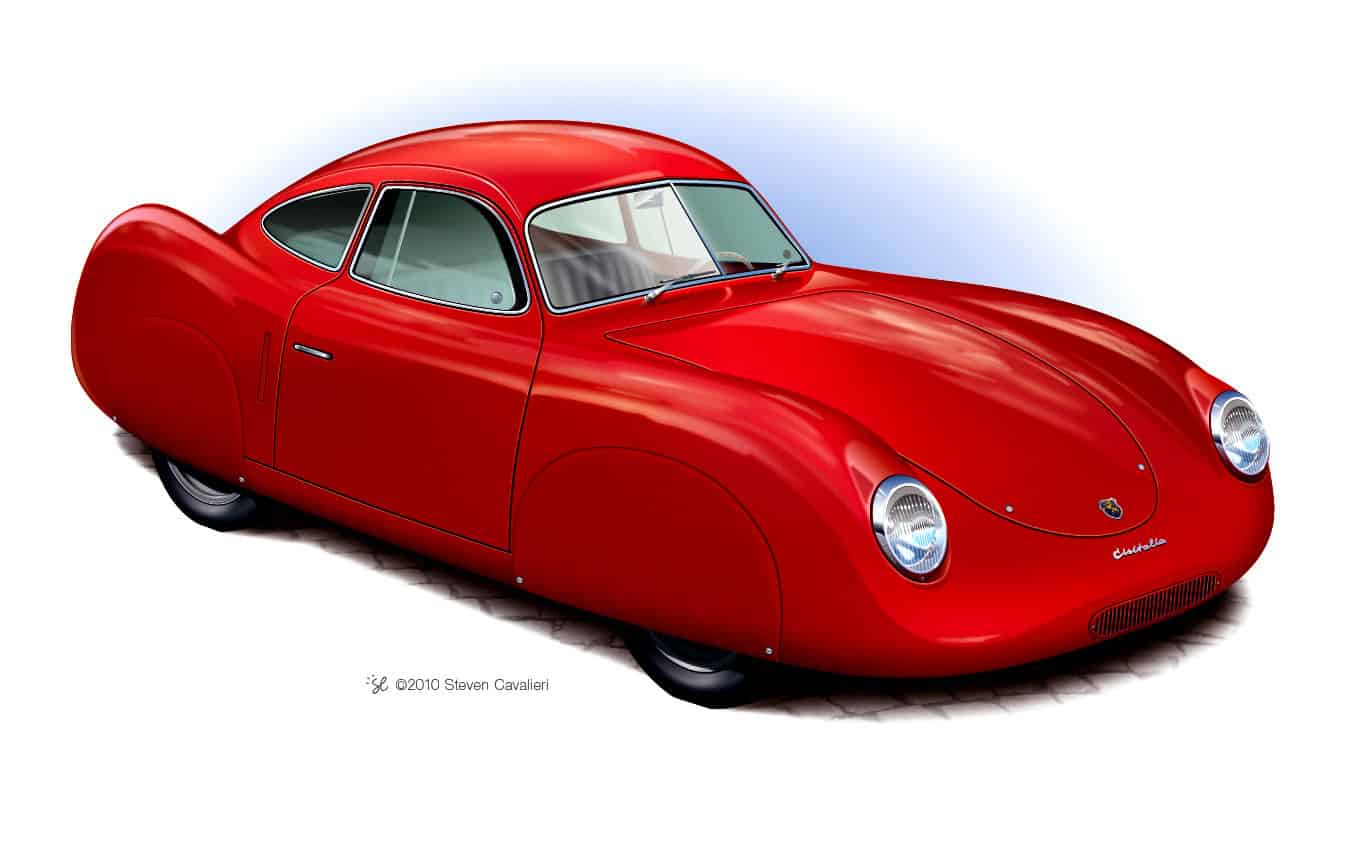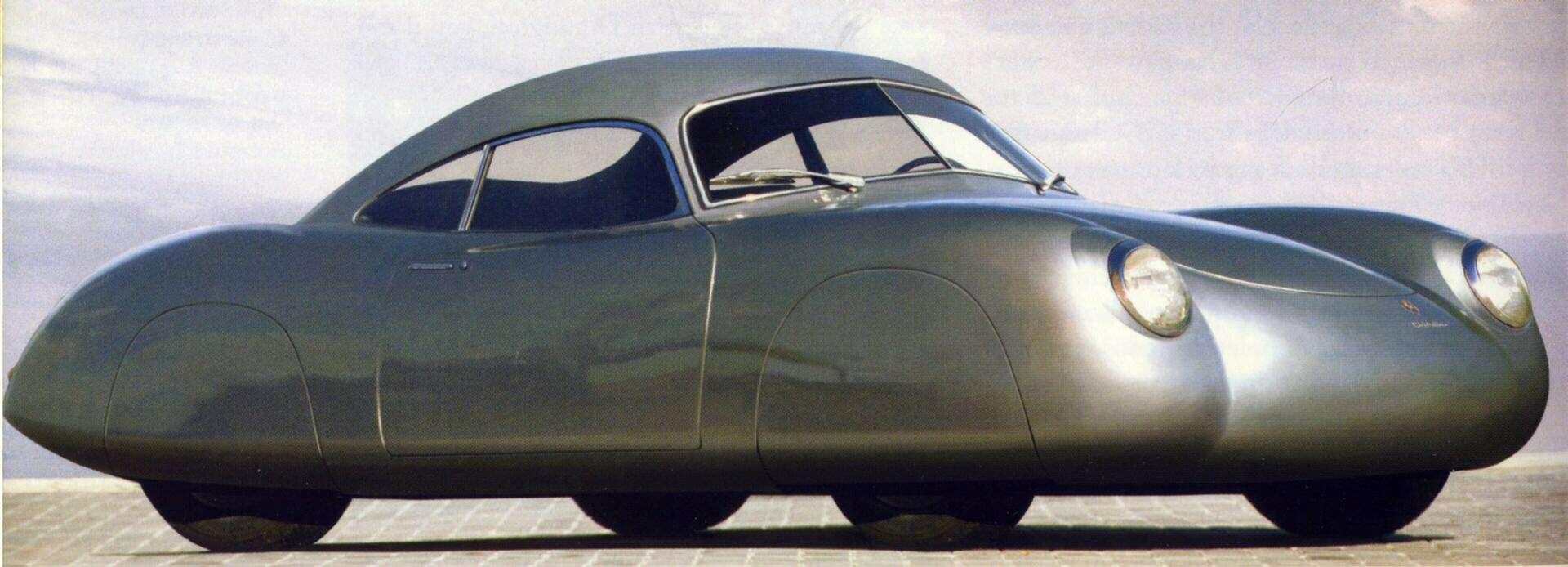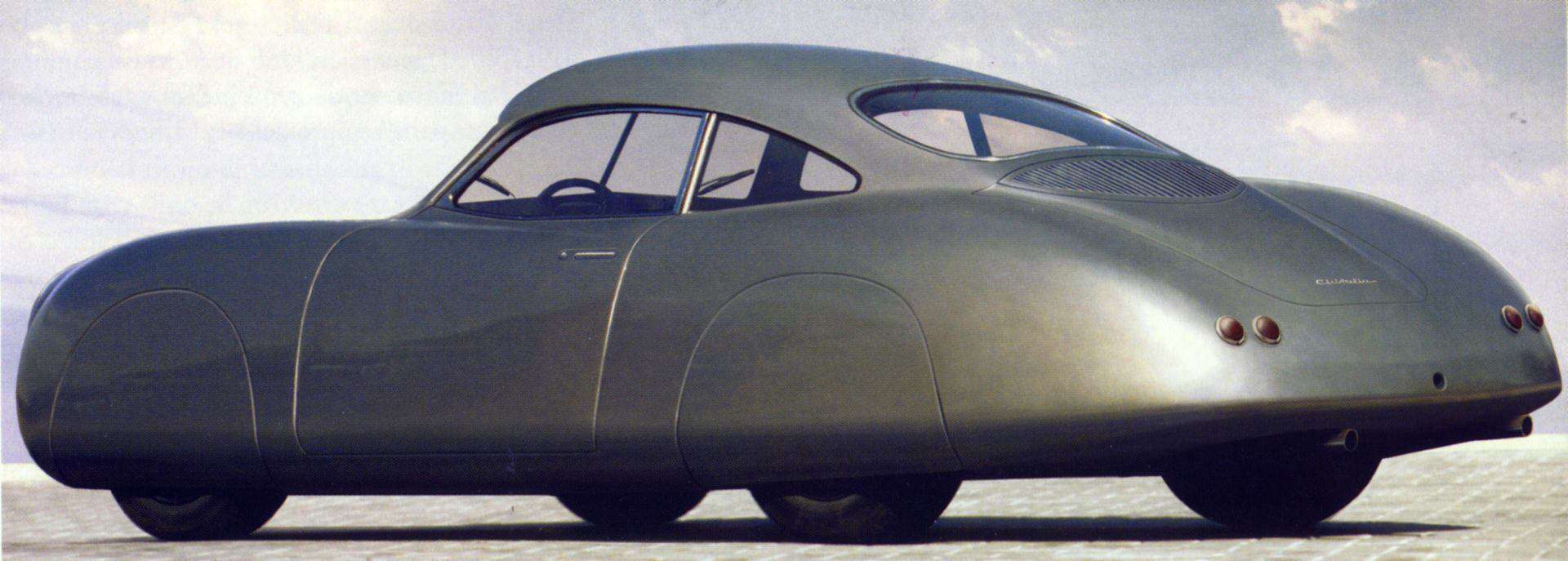Porsche’s Serious Sports Car for Cisitalia
The car that emerged from Gmünd drafting boards had the potential to cause a mega-stir among denizens of the 2.0-liter class.
WORDS & IMAGES BY: KARL LUDVIGSEN
Industrialist and passionate car enthusiast Piero Dusio was destined to illuminate Italy’s gloomy postwar years with the brilliance of a comet’s tail. Born in the state of Piedmont in 1899, Dusio gravitated to its capital Turin. Becoming Italy’s first maker of oilcloth at the age of twenty-seven, he expanded into the fabric products of which he was the main supplier to Italy’s army. Wealth thus earned allowed Dusio to enjoy his love of motor sports.
Starting at the top with a Maserati in 1929, Dusio set up the Scuderia Torino in 1938 and equipped it with four 1.5-liter Voiturettes from the Trident. That same year he took part with an Alfa Romeo in the Mille Miglia, placing an excellent third overall behind Alfa’s works cars. He also raced a Siata before the war. Gaining a jump start on rivals, in 1943 Dusio set up the mechanical-engineering company that became Cisitalia Automobili in 1945 — “Cisitalia” meaning “this side of Italy” or effectively “all of Italy.”
Piero Dusio made a fortune during the war by producing boots for the army. With his Cisitalia occupying an imposing office block and workshop at number 251 on Turin’s Corso Peschiera, Dusio was a charismatic figure in Piedmont’s industrial center and the moving spirit of its proud Juventus soccer team. As early as October 1944 he began thinking of building his own racing cars, confiding his plans to close colleagues.
Dusio started with small single-seaters for private owners to race when the war was over. In this he was assisted by Fiat man Dante Giacosa and later by Giovanni Savonuzzi, who brought the Fiat-based D24 to race-readiness. Some forty of the little space-framed cars were made.
From an initial concept by Giacosa, Savonuzzi evolved a two-seater version of the single-seater by widening its space frame. To get maximum performance from the Type 202’s 1.1-liter Fiat engine he perfected a super-streamlined coupe body in the wind tunnel of the Turin Polytechnic. In its realization by coachbuilder Alfredo Vignale its stabilizing tail fins were a prominent feature. Tests on the Autostrada found it capable of 125 mph from only 61 horsepower.
For a road-car version of the racing Cisitalia 202 Pinin Farina was engaged to adapt Savonuzzi’s concept. His marching orders from Dusio were “a car that is wide like my Buick, low like a Grand Prix car, comfortable like a Rolls-Royce, and light like our single-seater.” Farina did so with consummate style, creating an iconic coupe that made its first appearance in September 1947 in Milan and at a concours at Lake Como’s Villa d’Este.
Breaking new ground with its low hood and oval grille, the production Cisitalia 202 was justly hailed as an immaculate landmark design. Dusio made plans to produce five hundred such cars, in coupe and convertible styles. They were to sell for some $5,000 domestically and up to $7,000 in export markets, at a time when the most expensive Cadillac cost about $5,000.
With the launch of its Farina-designed coupe, hot on the heels of its racing successes, Cisitalia was one of the brightest stars of postwar Italy. Its Corso Peschiera plant was humming with a staff of 350 working on road cars and racing cars. But this wasn’t enough to fulfill Piero Dusio’s automotive ambitions. From the outset he had dreamed of building and competing with a proper Grand Prix Formula 1 car. In 1946 Dusio was eager to tackle the highest pinnacle motor sports had to offer.
A fortuitous series of links forged a chain that connected Piero Dusio to the Porsche engineers lodged in Gmünd. The first link was a letter from Carlo Abarth to Ferry’s sister. Once he had established contact, a regular correspondence developed between Abarth and Ferry Porsche. Drawn into the correspondence was another Austrian living near Merano: engineer Rudolf Hruska.
A clever and ambitious man, Hruska was also well known to Ferry Porsche. Born and educated in Vienna, he had gone to work for a German truck firm in 1937. There he’d been recruited for the growing Porsche staff by Karl Rabe. From 1939 through 1941 Hruska had served as a coordinator of the Volkswagen project, providing liaison between the Porsche engineering staff in Stuttgart and the VW production staff in Fallersleben.
Free to move at a time when the Porsche staff were still quarantined in Austria, Hruska and Abarth played an important role in arranging projects between Dusio and Porsche. The final contract with Cisitalia, dated 2 February 1947, included its funding of the design of two of Gmünd’s pet projects, a small tractor, Type 323, and one of Josef Mickl’s jewel-like water turbines, the Type 285. The main projects were a Formula 1 Grand Prix car, the Type 360, and a sports car, the Type 370. While Dusio’s dream of the G.P. car meant that would be emphasized, the sports car made considerable progress as well.
Different demands of the two cars would mean different approaches by Porsche. While the 360 had a new type of parallel-link rear suspension, Porsche’s Type 370 didn’t exploit its novel rear geometry. Instead it was given conventional rear swing axles with transverse torsion bars, akin to the Beetle’s design, and typical Porsche front suspension with trailing arms 6.3 inches long.
Nor did the 370 take advantage of Cisitalia’s well-established use of tubular space frames as the Type 360 did. To avoid the need for costly press tooling, a ladder-type tubular frame was specified with side members 120 mm in diameter, or 4.7 inches. To these a steel platform would be welded to add stiffness. Bodywork of either steel or aluminum was to be added.
In accord with Dusio, the Type 370 was laid out in three versions to cover the marketplace. Working at the Cisitalia offices in Turin, Erwin Komenda prepared initial layouts for two types of passenger car in the latter half of June 1947. Two models, a three- and a five-seater, would be mainstream passenger cars with rear engines overhung behind the rear wheels. The sports-racing two-seater version, referred to as the Mille Miglia car, was mid-engined.
The two-seat version shared a 94.5-inch wheelbase with the three-seater while the more capacious 370 model was stretched to 114.2 inches. Track of the civilian editions was 57.1 inches against a narrower 51.2 for the sports-racer to reduce its frontal area. Disc wheels with knock-off hubs were specified for the competition car with conventional fixings for the road models.
Dusio’s Type 370 was driven by a variety of engines in the several studies produced by Porsche. All were air-cooled 2.0-liter units. The initial design showed a 90-degree V-8. Highly unusual for such an engine was a proposal to split its crankcase vertically, holding it together around the main bearings by upper and lower cross-bolting and closing the case with rows of bolts at top and bottom. At its clutch end the crank drove a lower half-speed gear that turned the oil pumps as well as bevel gears to the shafts that drove the twin overhead camshafts on each bank.
An axial-flow cooling blower was specified, as was a large internal oil cooler. Two schemes were prepared for the blower drive, each of which took the drive from both camshafts. Initially a pair of shafts with bevel gears was proposed, but this was replaced by two twin-belt drives late in 1947. In traditional Porsche fashion the generator was concentric with the fan’s rotor.
The final choice, design-detailed in full, was a horizontally opposed “boxer” eight with five main bearings and a combination of gear and chain drive to its twin overhead camshafts. As in the V-8, finger followers opened the valves. With equal bore and stroke of 68 mm and 7.0:1 compression ratio to suit gasoline, the “civilian” version of the V-8 with restricted carburetion would deliver 100 hp at 5,000 rpm.
With four downdraft carburetors Porsche forecast 120 hp at 6,000 rpm from its 1,976 cc to propel the sports-racer. This was not an ambitious goal for the time. Maserati’s sports-racing six of 1947 developed 130 hp at 6,000 rpm, thanks to its very high compression ratio of 11.0:1, possible because the engine burned the methanol-based racing fuel that was widely used at the time. Running on gasoline, Ferrari’s 166SC V-12 was rated at 130 hp at 7,000 rpm with a compression ratio of 8.0:1. We can be confident that the V-8 would have been developed to higher output.
Equipped with Leopold Schmid’s new split-ring synchromesh, invented specifically for the Cisitalia projects, the 370’s five-speed transaxle had a set of step-down gears at its input. The objective of this, said Karl Rabe, was “to lower the centerline of the crankshaft to only some 10 mm above the centerline of the rear axle. Hitherto this had been some 110 mm. The engine’s new lower positioning requires dry-sump lubrication with two oil pumps and an oil reservoir offset to one side.”
The step-down gears provided a speed reduction of 1.6:1 while ratios of 3.22:1 and 3.57:1 were specified for the spiral ring and pinion. The selector shaft for the gearbox was to be operated hydraulically by a lever at the steering column, needing only a push up or down to go from one ratio to the next. The clutch too was hydraulically actuated. Three rubber mounts would carry the engine and transaxle.
For their Type 370 two-seater the Gmünd engineers forecast a drag coefficient of 0.25, very low for a practical road car. This was to be achieved with a coupe body that enclosed all four wheels in the manner of the Berlin-Rome Type 60K10 Volkswagen, similarly having wider bodywork at the front to accommodate the steered wheels. The greenhouse was narrow, though not to the extreme of the 60K10, above fenders that rose at the rear to form stabilizing fins hewing to the heritage of Savonuzzi’s Cisitalia designs. Two spare wheels were carried in the nose, which like the 60K10 had a small grille behind which the horns sounded.
Here was a project that advanced the thinking of the Porsche team in general and Erwin Komenda in particular on the subject of high-performance sports cars. The racing Type 370 was a more muscular and purposeful interpretation of the concept that had shaped the Berlin-Rome Volkswagen. It retained that car’s skirted wheels, which were confirmed by wind-tunnel testing as offering the ultimate in low form drag albeit at the expense of the larger frontal area needed to accommodate turning front wheels. The net effect was found to be beneficial.
Both versions of the 370 were specifically laid out by Komenda and Rabe with the aim of placing at least 40 percent of the car’s weight on the front wheels at all times, to be confident that steering and braking would always be effective. This was in line with the principles on which Ferdinand Porsche insisted in his rear-engined designs; the founder took a close interest in the details of the Type 370.
In the event it was a near thing with the road cars having a forecast 61 percent on the rear, with driver and some fuel aboard, while in the same condition the Mille Miglia model had 54 percent of its weight rearward.
Working as they were for a client whose existing cars were water-cooled, as was the Grand Prix car they had designed for Cisitalia, the Porsche engineers might have been thought likely to use the same method for the Type 370. Had the brief been for the mid-engined Mille Miglia model alone, liquid cooling would have been the probable choice as it had been in their own precedent, the design of the V-10 Type 114.
Their decision to plump for air cooling was almost certainly driven by their desire to combine the use of rear-mounted engines — overhung at the rear in the passenger versions — with their self-imposed constraint on rear-wheel loading. Inherently lighter, the air-cooled eights were equally suited to either position. Had Cisitalia asked for front-mounted engines the choice would inevitably have been liquid cooling.
Discussions went back and forth between Gmünd and Turin into late 1947 on the final layout of the various Type 370s. Meanwhile, Cisitalia’s home-grown sports-racing cars were doing well enough as shown by their performance in the Mille Miglia of June 1947, in which Tazio Nuvolari finished second in spite of a 20-minute delay for ignition repairs. The Pinin Farina-bodied Type 202 coupe that would cause such a sensation in the autumn was also being readied in Turin. For the further evolution of these models Giovanni Savonuzzi was working on an advanced 1.5-liter 16-valve four during 1947.
The upshot was that Rudolf Hruska reported to the Porsche team in Gmünd that Cisitalia didn’t want to proceed with the racing version of the Type 370. Emphasis was now to be on the passenger-car variant, as Hruska confirmed at a meeting with the Porsches father and son on 18 November 1947.
Worked out near the end of 1947 were coachwork plans to provide “raw principal bodywork designs,” together with a chassis layout, as a pattern for the coachbuilders. The aim was to have Komenda carry the designs to Cisitalia in Turin not later than 10 January 1948 as a guide for Pinin Farina, which would build the bodies.
Regrettably the Type 370 remained only a design in all of its versions, for already in 1947 it was evident that work on the Grand Prix car was overstraining Cisitalia’s resources. Nevertheless design work on the passenger-car version of the 370 continued well into 1948 before it was definitively ended by the Italian company’s collapse. Drawings, a scale model and renderings showed that the Mille Miglia version of the Type 370 would have been a serious shock to the rest of the 2.0-liter class of racing sports cars.

